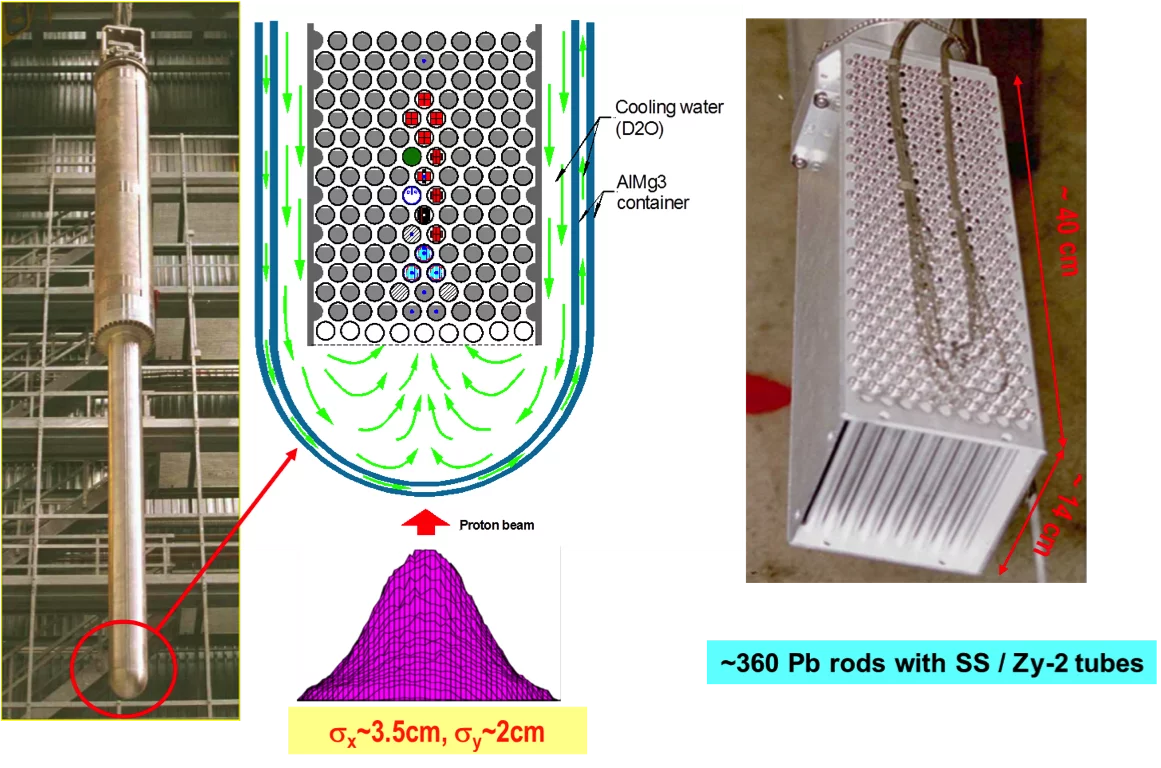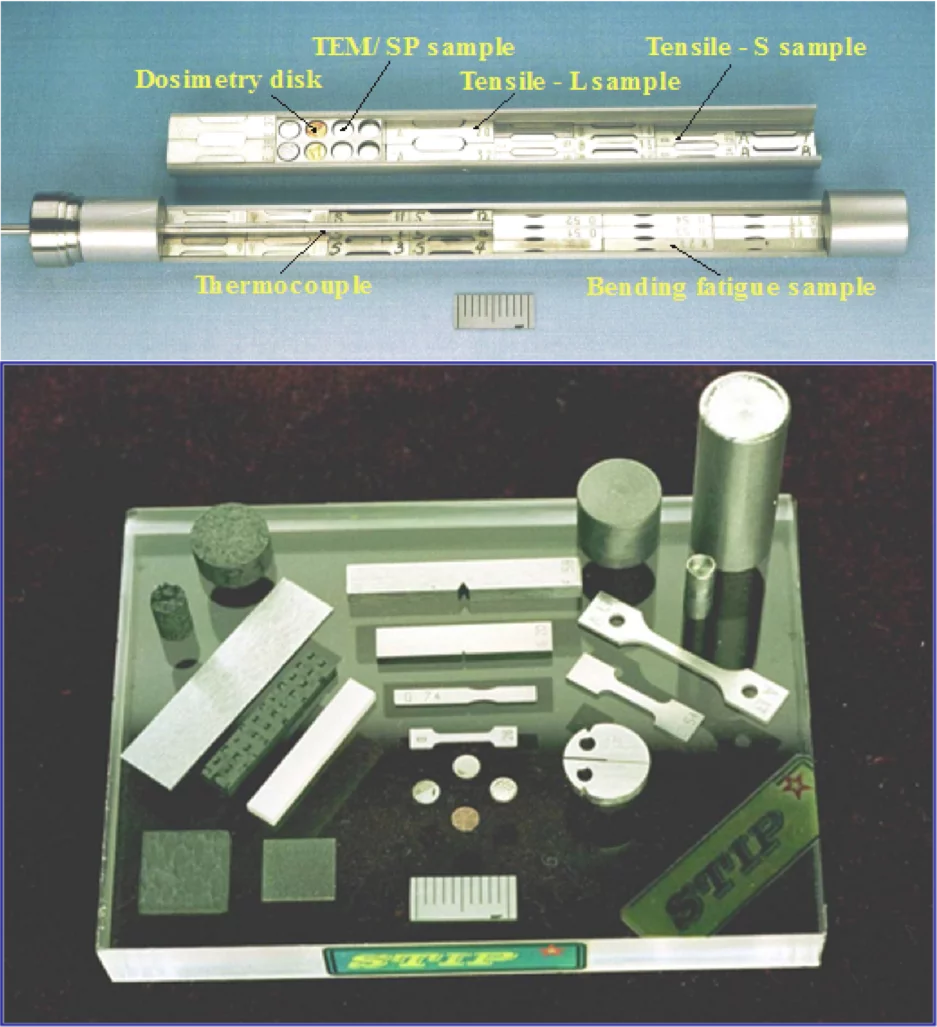The unique SINQ Target Irradiation Program (STIP) is using SINQ targets (Figure 1) as an irradiation device and is operated as a user facility in collaboration between LNM and the NUM Division. Various miniature type specimens (Figure 2) are irradiated in a real environment of a spallation target with high energy protons and spallation neutrons.
The irradiation dose can reach about 15 dpa (in Fe) per year, accompanied with high production rate of helium (~800 appm/y) and hydrogen (~4000 appm/y). STIP has received continuous interest from spallation, fusion and ADS communities in Europe, Asia and USA (e.g., CEA, FZJ, CIAE, IMP, JAEA, LANL, ORNL, UCSB, …) since the first irradiation experiment conducted in 1998-1999. More than 7000 samples from 60+ different materials of Fe-, Al-, Ti- Ni-, Mo- & W-alloys and ceramics (C/SiC, SiC/SiC…) were irradiated in the first six experiments (STIP-1 to -6) up to 28 dpa / 2000 appm He (in steels) at temperatures up to ~800°C.
The main purposes of STIP in LNM are:
The main purposes of STIP in LNM are:
- to provide necessary materials data for developing advanced spallation targets;
- to understand radiation, He and H effects in different structural materials;
- to study liquid metal effects on structural materials in intensive irradiation environments.

